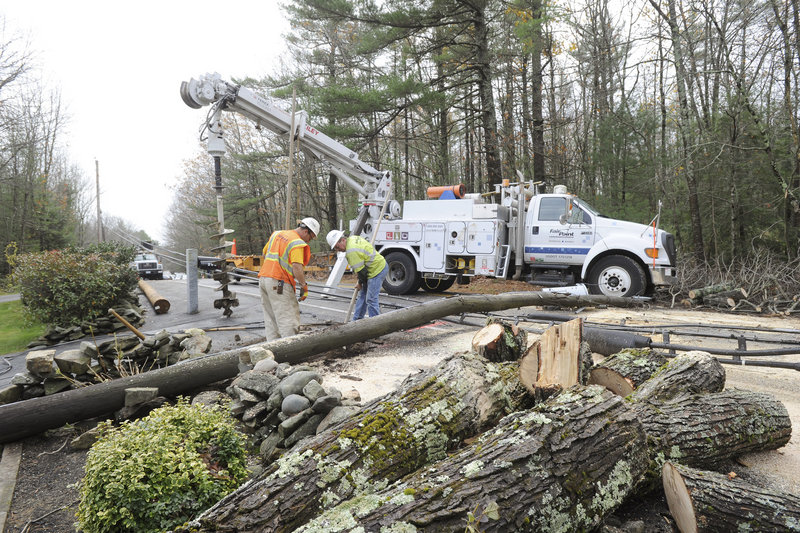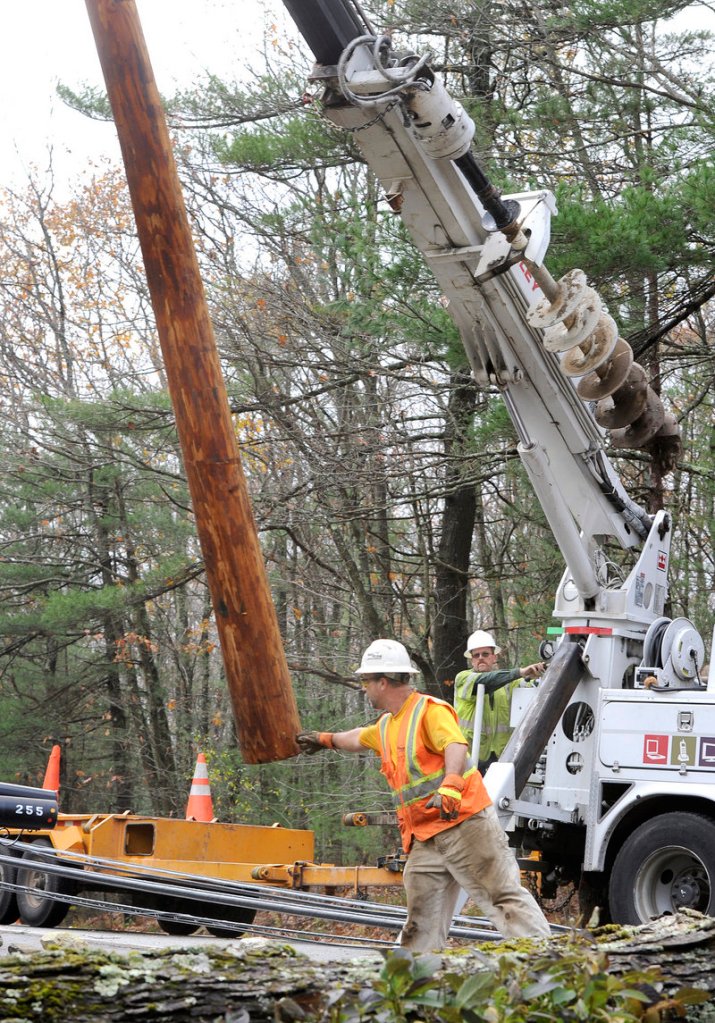To restore electricity to the 159,000 homes and businesses that lost it in this week’s superstorm, Central Maine Power Co. has about 1,200 field workers and contractors working 17-hour shifts.
“You just go to battle. Once line work is in your blood, it’s with you until the day you die,” said Andrew Tripp, a contractor with McDonough Electric Construction Corp. of Bedford, Mass., who was working for CMP on Tuesday to restore service in Yarmouth.
Working on little sleep and a lot of adrenaline, line workers have been dealing with fallen wires, downed trees and high winds.
“You just keep focused on your work,” said Tripp, who has worked in electrical line repairs for 25 years.
“Watch your buddy’s back. Watch the public. There’s 50 things going on at once, but it’s second nature.”
Much of the work to restore power had to wait until after the storm cleared out of the area, because crews can’t raise their cherry-picker buckets in winds stronger than 30 mph.
Winds were gusting over 60 mph Monday night.
Paul Burrows, a CMP line worker who was in Cape Elizabeth on Tuesday, said, “It can get nerve-wracking when you hear the trees creaking, but it’s what we do.”
Burrows worked until almost 2 a.m. on Tuesday, grabbed a few hours of sleep and was back on the job at 8 a.m.
His crew cruised the streets of Cape Elizabeth, looking for downed lines, fallen trees and blown-out fuse boxes.
Dispatch supervisors sent his crew to specific locations to fix fallen or tangled lines.
The work went slowly as the crew had to block off Beach Bluff Terrace for safety reasons. A lineman was lifted in a cherry-picker to haul lines back into place.
At a stop on Hillcrest Drive, a tangle of tree limbs had ripped lines from a house.
“You can’t just flip a switch and everything’s OK,” said Todd Hall, a lineman with McDonough Electric Construction who was working in Yarmouth. “You put the biggest lines on first to feed the most amount of people. And you work down from there, line by line, street by street, until you get to the smallest towns and camp roads.”
Compared with Hurricane Bob in 1991, Sandy’s damage in Maine seemed minimal, Hall said.
“But it’s been 20 years since there’s been another bad storm — Hurricane Bob — and you have 20 years of tree growth and so there’s some old trees coming down,” said Hall.
Maine’s worst outage occurred in 1998, when an ice storm in January cut power to 800,000 residents.
Once this week’s restoration is completed in Maine, crews will likely go to New York and New Jersey, which took the brunt of Sandy’s damage.
CMP spokesman John Carroll said, “We’ll be expected, as members of a mutual assistance team, to provide help, but not until our work here is done.”
Staff Writer Jessica Hall can be contacted at 791-6316 or at:
jhall@mainetoday.com
Send questions/comments to the editors.




Success. Please wait for the page to reload. If the page does not reload within 5 seconds, please refresh the page.
Enter your email and password to access comments.
Hi, to comment on stories you must . This profile is in addition to your subscription and website login.
Already have a commenting profile? .
Invalid username/password.
Please check your email to confirm and complete your registration.
Only subscribers are eligible to post comments. Please subscribe or login first for digital access. Here’s why.
Use the form below to reset your password. When you've submitted your account email, we will send an email with a reset code.